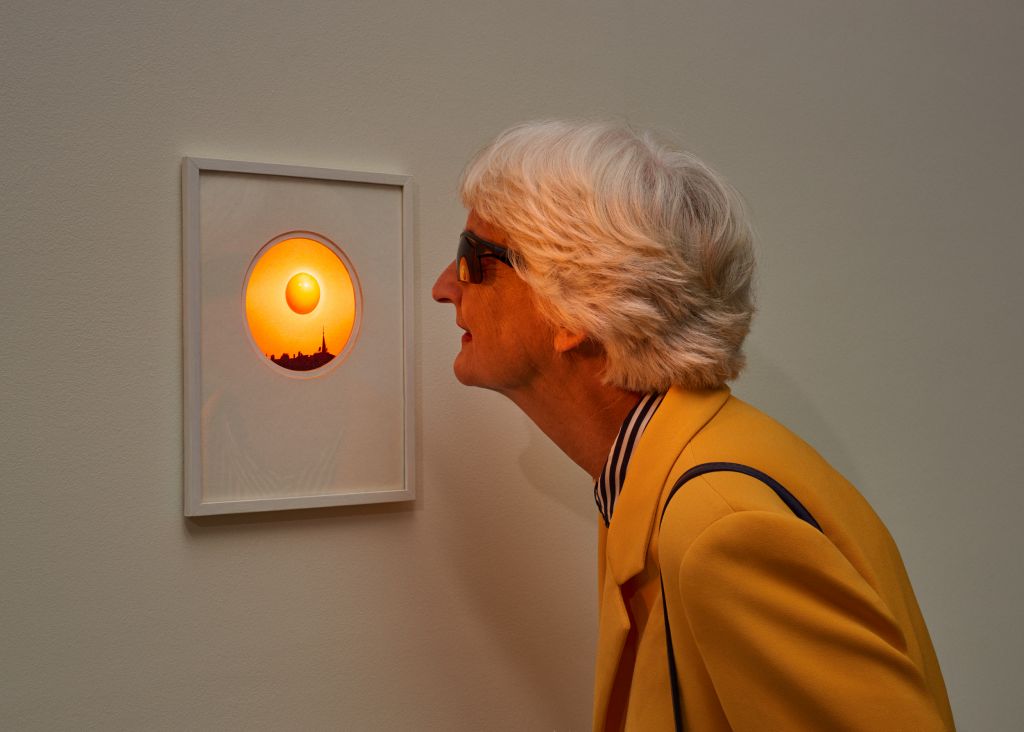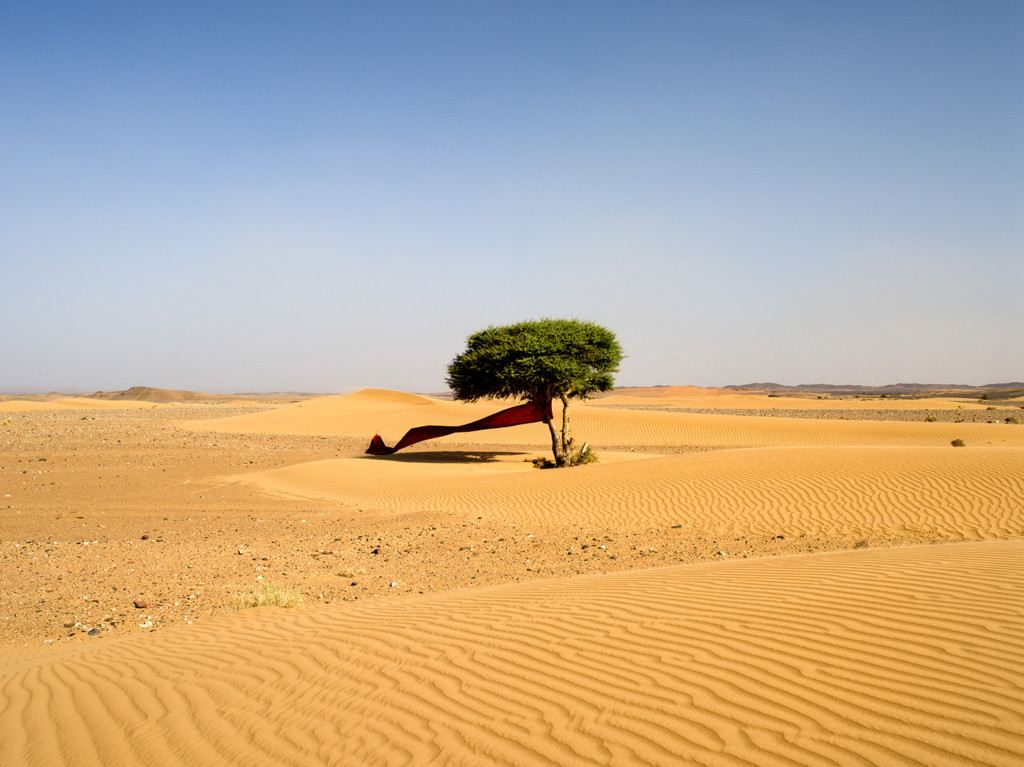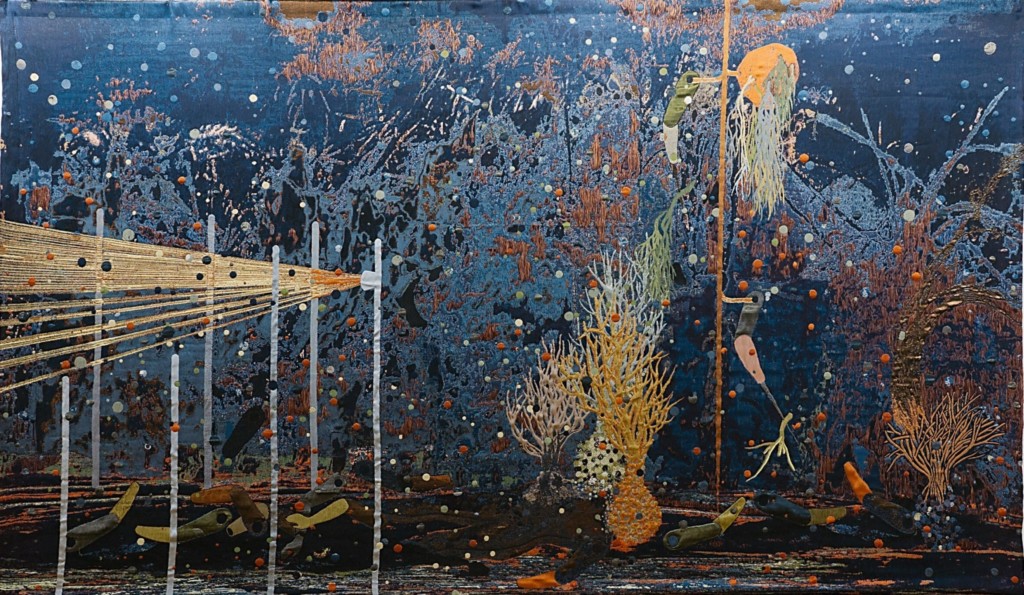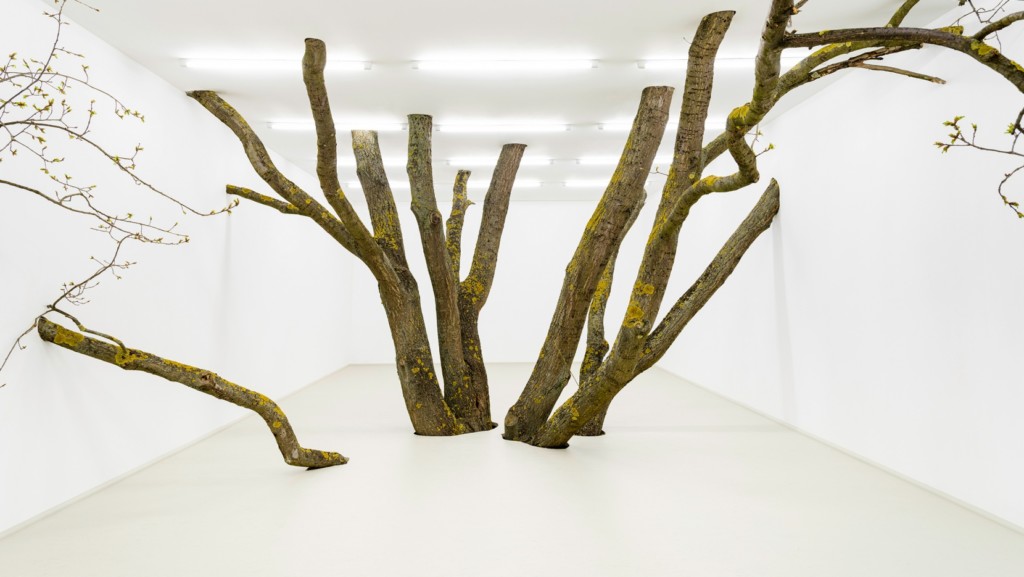In 2022, the art world, seemingly fully recovered from the pandemic, was dominated, once again, by the issue of the climate crisis. In the context of an angry civil society, symbolized by Just Stop Oil’s museum protests, 2022 was a watershed year, with numerous new ecological commitments made by arts institutions, such as the Venice Biennale’s recent carbon neutral certification, as well as an increasingly environmentally-committed artistic programming.
Fortunately, 2023 seems to announce a renewal of the steps taken in 2022. The theme of the climate crisis will be the focus of many biennials and exhibitions, and an inspiration for a growing segment of artists. From the Jimex Museum in Mexico to the Gwangju Biennale in South Korea, we’ll see how artists like Otobong Nkanga, Haroon Mirza, Alfredo De Stefano and many others, hand-in-hand with institutions and curators, are seeking to address, in different ways, our environmental emergency.
BIENNIALS AND FAIRS
The Gwangju Biennale will also open its doors to the public with a program focused on water. Curated by Tate Modern chief curator Sook-Kyung Lee, the 14th edition of this South Korea-based biennale will run from April 7 to July 9. Its title Soft and tender like water is based on the philosophies in Laozi’s ‘The Tao Te Ching’, and the program will be divided into four themes: Luminous Halo, Ancestral Voices, Transient Sovereignty, and Planetary Times, including more than 80 international artists.
California is hosting two major events. The 2023 edition of Desert X in the Coachella Valley is starting on March 4. With the striking headline Contrary to the archetype, a desert is not defined by the absence of water: the desert landscape is formed by the memory of water, the event announces its focus: the lack of water both in the arid landscape of the desert, and beyond, amid global climate change. Artistic Director Neville Wakefield and co-curator Diana Campbell were inspired by the mythologies held about the desert, specifically how people and nature survive in extreme conditions and address the issue of water scarcity. Still on the West Coast, the LA Art Show, held at the Los Angeles Convention Center from February 15 to 19, will have an entire section focused on climate change. It’s the second year in a row that the network of institutions comprising DIVERSEartLA, which involves museums, such as the Museum of Latin American Art, as well as cultural organizations and non-profits, has chosen to highlight the climate crisis since the section was inaugurated in 2015. In the words of DIVERSEartLA curator Marisa Caichiolo: “How do we navigate these changes we’ve caused, where can we have positive impacts…and where do we find hope?”. Within the same events program, the AMA | Art Museum of the Americas from Washington DC will present an immersive experience by artist Alfredo De Stefano. One of Mexico’s most important contemporary artists, De Stefano’s photographs document a form of prophecy, in all its fascinating and terrible beauty: the vision of our planet as a desert land, the result of man-made global warming.
MUSEUMS AND INSTITUTIONS
The World Weather Network is set up to be one of the most exciting events of 2023. This network of artists and institutions across 27 countries will organize exhibitions (online and offline), conferences, and artworks centred around climate change, throughout the year. The project was launched in 2021 by Michael Morris and James Lingwood, directors of the London-based organization Artangel, with the goal of combining the knowledge of scientists and the imagination of artists in order to delve into climate data. At the heart of the network is an online hub where projects can be experienced without the environmental costs of travel. The project includes household names such as Liam Gillick, Katie Paterson and Hiroshi Sugimoto, but also lesser-known artists and researchers from other fields.
New exhibition by an artist who has been in our spotlight for a long time now: Nigerian-Belgian artist Otobong Nkanga. Her solo exhibition Gently basking in debris will open on February 3rd at the Gordon Contemporary Artists Project Gallery, part of the The Frist Art Museum in Nashville, and will run until April 23.
On January 27, the Armory Center for the Arts in Pasadena, California will inaugurate Exposure: native art and political ecology. The exhibition includes works by Indigenous artists aiming at documenting the responses to the impacts of nuclear testing, uranium mining and toxic waste on native peoples and the environment in Australia, Canada, Greenland, the US, Japan, and the Pacific Islands. The works, including sculpture, video, photography, paintings and VR, will tell personal stories of illness, struggle and resilience.
How much energy do we have and need today? This question is at the core of The Energy Show – Sun, Solar and Human Power at Het Nieuwe Instituut in Rotterdam (until 5 March 2023), an exhibition in collaboration with The Solar Biennale that revolves around the sun and its design possibilities. It reflects on visitors’ personal energy levels, featuring examples of innovative solar technology, and poses the question: what would the world look like if it ran on solar energy?
At the EMMA Espoo Museum of Modern Art in Finland, the site-specific installation The Preserving Machine by Dora Budor will be on view until April 2. The work is part of the In Search of the Present exhibition, including Rafael Lozano-Hemmer, Refik Anadol, and Raimo Saarinen, that dissects the intersections of nature, technology and art. The title of the work is borrowed from a 1953 story by Philip K. Dick in which people attempt to preserve classical music during a cultural collapse by encoding musical notes into animals. However, mutations in the animals render the musical works unrecognisable as nature and culture compete for existence.
The group exhibition Desert Flood curated by Jérôme Sans at Lago/Algo, Mexico, from February 1st until July 15, confronts us with the reality of a world that has become paradoxical. Born after the Covid-19 pandemic, Lago/Algo is a space focused on socio-ecological issues and aims at considering art as a guide towards new models in harmony with nature. Focusing on water, an essential resource and source of life but also a destructive force, the show brings together the artists Claudia Comte, Gabriel Rico and SUPERFLEX.
The group show Rivers can exist without water but not without shores at the Museum of Contemporary Art, Lima (through April 30) brings together artworks focusing on the Peruvian Amazon rainforest by more than 60 artists, including members of indigenous Peruvian tribes. The exhibition seeks to push back against stereotypical vision of the rainforest as a place outside of civilization stuck in an Edenic past – a vision that has rationalized its devastation – and offers new perspectives based on indigenous knowledge. Also running at the museum until 29 January is SOLAR RETURN by Luis Enrique Zela-Koort, winner of the MAC Lima Award for Art and Innovation 2022. The artist proposes a return to the Sun, the primary witness and creative agent of the history of the Earth.
The show Perceptible Rhythms/Alternative Temporalities at MEI’s Arts & Culture Center in Washington DC (until April 28) features 12 artists from the Middle East and South Asia (such as Abbas Akhavan, Marianne Fahmy…) who explore the impact of conflict, urbanisation and climate crisis on their environments, and the approaches through which humankind can better take care of the planet, particularly by reconnecting with historic cultures and discovering extinct plant species.
In recent years, many artists – including Refik Anadol, John Gerrard, Jakob Kudsk Steensen,Andreas Greiner,Troika,Bianca Kennedy&Swan Collective, Marco Barotti, and Carolin Liebl & Nikolas Schmid-Pfähler – are making use of advanced technologies such as AI and machine learning to create technically-innovative artworks in relation to current climate discourse. With her exhibition I must alter myself into a life-form which can exist on this planet at HEK Basel (until March 19), Anne Duk Hee Jordan, a leading figure of this movement, asks how we can harmonize with nature to avoid endangering our planet even further. Her futuristic scenarios, composed of sculptural and biological elements, suggest an environment in which humans and non-human beings can evolve together. Jordan’s artistic universe is populated by humorous robotic machines with which she explores connections to other species.
MELTDOWN – Visualizing Climate Change is on show at the KühlhausBerlin from February 17 until March 5. This group show has travelled the world during the last few years, educating visitors on the topic of human-induced climate crisis, and will be accompanied by numerous evening debates and artist talks.
At Museo Jumex in Mexico City, the Mexican artist Minerva Cuevas presents Game Over (until February 26), a participatory scenography around the concepts of play, ecology, and urban development. In this installation, she generates references to playgrounds and contemporary landscapes that mirror social processes of the past century.
PRIVATE GALLERIES
In the realm of private galleries, the winds have been shifting ever since the foundation of the Gallery Climate Coalition, a network of 800 members from 20 countries devoted to creating a road map for galleries to reduce their climate emissions by 50% by the year 2030. Some galleries have also made an attention to nature and environmental changes central to their programming. An example is the Alexander Levy Gallery in Berlin, which this year celebrates its 10-year anniversary by bringing together the work of all its artists, in order to draw attention, through ecological, political, social and scientific lenses, to the changes of our planet. Entitled The Unexpected Universe: Traces of the Anthropocene the exhibition opened with selected works by Julius von Bismarck, Fabian Knecht, Colin Snapp and Su Yu Hsin.
Lisson Gallery in London will open a new solo show by Haroon Mirza on February 24, running until April 8. The artist presents a constellation of new installations, entitled |||, centred around the so-called ‘Divine’ frequency 111 Hz, which creates a sonic bathing experience that permeates the gallery (read the interview here).
The opportunities to immerse ourselves in the reflections of artists who care about nature and the environment are many, and we will be keeping a close eye on the engagement and impact of these initiatives.
Our next issue will be focused on exhibitions in France, including Avant l’orage (Before the Storm) at the Bourse de Commerce-Pinault Collection in Paris and many other great exhibitions. Don’t miss it!
Lucia Longhi
January 2023
Impact Art News, December 2022-January 2023 #41
Cover : Mirka Laura,Solar-Views, The Visitor, 2021
Subscribe to Impact Art News (free): ici
Exhibitions and events listed in the article:
- Gwangju Biennale, South Korea, April 7 – July 9 2023
- DESERT X , Coachella Valley, California, March 4 – May 7 2023
- LA Art Show Los Angeles Convention Center, Los Angeles USA, February 15 – 19 2023
- DIVERSEartLA, Los Angeles, USA, various institutions, February 15 – 19 2023
- Gently basking in debris, solo show by Otobong Nkanga, Gordon Contemporary Artists Project Gallery, 3 February – 23 April 2023
- Exposure: native art and political ecology, Armory Center for the Arts in Pasadena, California January 27 – 11 June 2023
- The World Weather Network, network of artists and institutions in 27 countries, 2023
- The Energy Show – Sun, Solar and Human Power, Het Nieuwe Instituut in Rotterdam, until 5 March 2023
- The Preserving Machine by Dora Budor, EMMA Espoo Museum of Modern Art in Finland, until 2 April 2
- Desert Flood, group show, LagoAlgo, Mexico, 1 February – 15 July
- Rivers can exist without water but not without shores, group show, Museum of Contemporary Art, Lima, until 30 April 30.
- SOLAR RETURN, by Luis Enrique Zela-Koort, MAC Lima Award for Art and Innovation 2022, MAC Lima, until 29 January
- Perceptible Rhythms/Alternative Temporalities, group show, MEI’s Arts & Culture Center in Washington DC, until 28 April 28
- I must alter myself into a life-form which can exist on this planet , Anne Duk Hee Jordan , HEK Basel, until March 19
- MELTDOWN – Visualizing Climate Change, group show, Kühlhaus, Berlin, 17 February 17 – 5 March 2023
- Game Over, solo show, Minerva Cuevas, Museo Jumex in Mexico City, until 26 February 2023
- The Unexpected Universe: Traces of the Anthropocene, Alexander Levy Gallery, Berlin, until 11 February 2023
- Lisson Gallery, Haroon Mirza, 8 February – 8 April 2023







